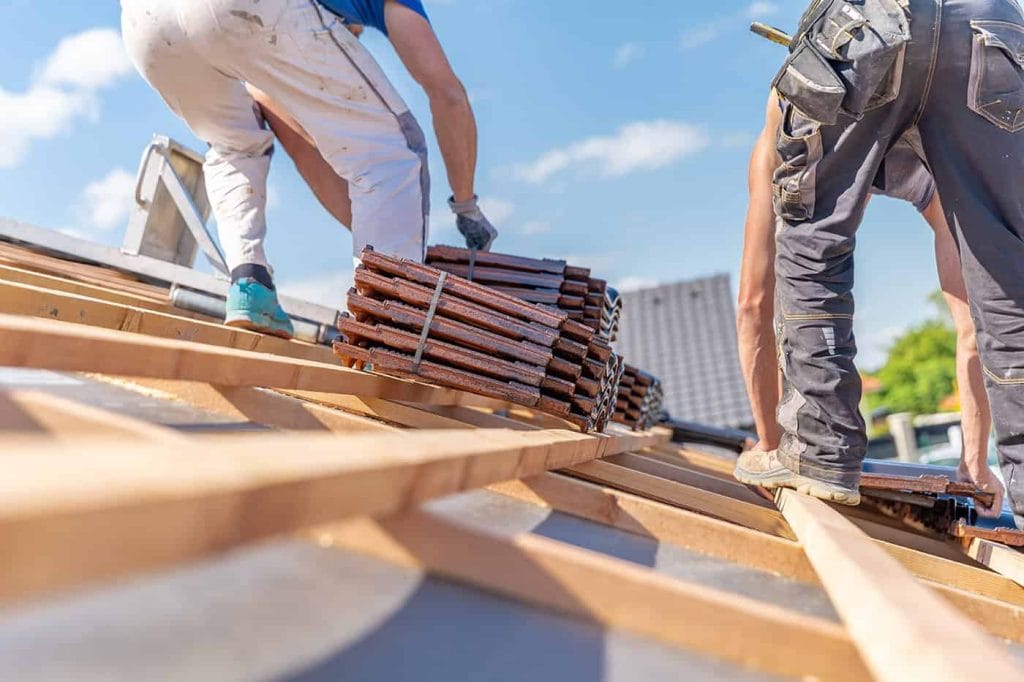Investing in a new roof system is a major decision. It can provide homeowners with numerous benefits, such as increased energy efficiency and improved aesthetics; however, it may also be an expensive endeavor that requires significant financial resources.
This article will explore the pros and cons of investing in a new roof system to help readers make informed decisions about their home improvement needs. The installation of a new roof system involves more than just purchasing materials – there are many other factors to consider before making this important investment.
Understanding these considerations is essential for any homeowner looking to upgrade or replace their existing roof system. This article will cover what potential buyers should look out for when considering taking on this project.
Cost Of Installation
Homeownership comes with a variety of costs and potential investments, including the installation of a new roof system. The cost of such an investment will depend on the size, materials used, and complexity of the project, as well as the labor required to complete it in a timely manner.
Generally speaking, installing a new roof is not cheap; however, there are several benefits associated with this type of upgrade that could make it worthwhile for homeowners.
One benefit is improved energy efficiency. Installing a high-quality roof can reduce cooling and heating costs by helping keep temperatures inside more consistent throughout the year. Additionally, many modern roofs come with warranties that guarantee their effectiveness over time, which can help protect against future repair or replacement costs if they become necessary due to damage or wear-and-tear over time.
Finally, depending on the scope and extent of the project, installation time may be relatively short compared to other major home improvement projects like adding insulation or replacing windows. Investing in a new roof system should therefore be considered carefully before making any decisions about whether or not it’s worth investing in for your particular situation.
Quality Of Materials
The cost of installation is a major factor to consider when investing in a new roof system. However, equally important is the quality of materials used and the methods employed for their installation.
Many alternative materials are available on the market today that can increase the life expectancy of a new roof while ensuring its durability during extreme weather conditions. For example, rubberized polymers provide superior resistance against moisture absorption and thermal expansion or contraction. Furthermore, metals such as zinc and aluminum have gained popularity due to their corrosion-resistant properties, which makes them ideal for coastal environments.
Careful consideration must also be given to the process of installing these materials correctly; incorrect installation techniques can lead to premature deterioration caused by insufficiently sealed joints and inadequate fastenings. Thus it is essential to ensure experienced professionals carry out any repair work and take advantage of modern technologies like infrared imaging systems that help detect vulnerable areas where water may penetrate through crevices before they become an issue.
Energy Efficiency
When considering the pros and cons of investing in a new roof system, energy efficiency should be taken into account.
A modernized roof system can help reduce energy costs as it helps to improve insulation levels throughout the home or building. As a result, homeowners may find that they are able to enjoy significant savings on their energy bills over time.
Beyond this financial benefit, many new roof systems also offer instant rebates from local utility companies which further lowers the cost of installation. In addition to these monetary benefits, improved energy efficiency can also contribute towards reducing an individual’s carbon footprint.
By installing more efficient materials with better insulation levels, the amount of heat loss through traditional building materials is significantly minimized – leading to reduced reliance on heating and cooling appliances for temperature regulation throughout the year. This could potentially have a dramatic impact on global warming due to lower emissions associated with electricity production.
With all these factors considered, investing in a new roof system has clear potential advantages when compared against traditional models.
Durability
Investing in a new roof system can act as an important asset for any building, providing protection from the elements and increasing insulation. With this being said, there are several key considerations to take into account when assessing whether or not investing in a new roof system is right for your situation.
A major factor to consider is durability; how long will it last? This can be determined by looking at the lifespan estimation of the product and taking into consideration factors such as installation process and weather conditions that may affect its longevity.
When considering the installation process involved with installing a new roof system, it is essential to ensure that all materials used are of high quality and meet industry standards. It is also vital to understand what type of maintenance requirements must be met after installation in order to keep the roof functioning properly over time.
Additionally, if you choose to install a more expensive option like metal or tile roofs, then you should expect a much longer life expectancy than shingle roofs due to their greater resistance against wear-and-tear damage caused by strong winds or extreme temperatures. Ultimately, researching these topics thoroughly before making an investment decision will help provide peace of mind knowing that your money was well spent on something that has been designed to stand up against wear-and-tear for many years ahead.
Aesthetics
In addition to its durability, a new roof system also offers many aesthetic benefits.
One of the biggest advantages is that it allows for wide range of color selection. With this variety, homeowners can choose colors that perfectly match their home and personal preferences. Furthermore, they have the opportunity to stay up-to-date with current style trends when selecting a new roof system.
Another advantage of investing in a new roof system are its design options. Many manufacturers offer varieties such as slate shingles or metal panels which add texture and depth to the exterior of any house. Not only do these styles provide an aesthetically pleasing look but they also increase property value due to their classic appearance.
Therefore, investing in a new roof system will not only enhance one’s home aesthetics but also protect it from future damage.
Maintenance Requirements
Investing in a new roof system requires an understanding of the necessary maintenance requirements for continued performance and longevity.
Preventive maintenance is essential to ensure that the roof remains structurally sound, as well as to identify any potential problems before they result in costly repairs or replacements.
Regular inspections should be conducted at least once per year with special attention paid during seasonal changes when wind, ice, snow and other environmental factors can have an impact on its integrity.
Additionally, periodic cleanings remove accumulated debris from gutters, valleys and drains; these areas are especially prone to blockage due to their tendency to collect organic matter like leaves and twigs during high winds.
Seasonal upkeep also includes checking for water damage around skylights, vents and chimneys, ensuring that seals remain intact along edges and flashing points where two different materials join together, verifying proper drainage throughout the roof deck slope, inspecting caulking around all fittings – including pipes and parapets –and regular oversight of insulation levels and ventilation systems.
Properly maintained roofs provide protection against weather conditions while enhancing energy efficiency by controlling indoor temperatures; this helps reduce monthly utility bills while prolonging the lifespan of both interior components and external finishes.
Therefore, taking the time to regularly inspect a newly installed roof system will help protect one’s investment over time; with care taken upfront it may even outlast its expected service life expectancy without requiring additional costs down the road.

Environmental Impact
The environmental impact of investing in a new roof system is an important consideration.
With advances in technology and materials, there are now options to reduce the eco footprint while reducing waste.
The use of renewable energy sources such as solar panels can help generate electricity that can be used for appliances or heating systems within the residence. This has the potential to reduce carbon emissions by up to 50%.
Additionally, recycled building materials or products made from recycled content can drastically reduce landfill waste.
Even choosing lighter colors for roofs helps absorb less heat and reflects more sunlight back into space, helping keep temperatures cooler during summer months.
Investing in a new roof system not only offers benefits for homeowners but also contributes towards protecting our environment for generations to come.
Conclusion
Investing in a new roof system is an important decision for any homeowner. It is necessary to weigh the pros and cons of such an investment before committing to it.
The cost of installation, quality of materials used, energy efficiency, durability, aesthetics, maintenance requirements and environmental impact all need to be considered when making this decision.
Ultimately, if these points are taken into account properly then investing in a new roof system can be beneficial for homeowners as well as during their property values.















